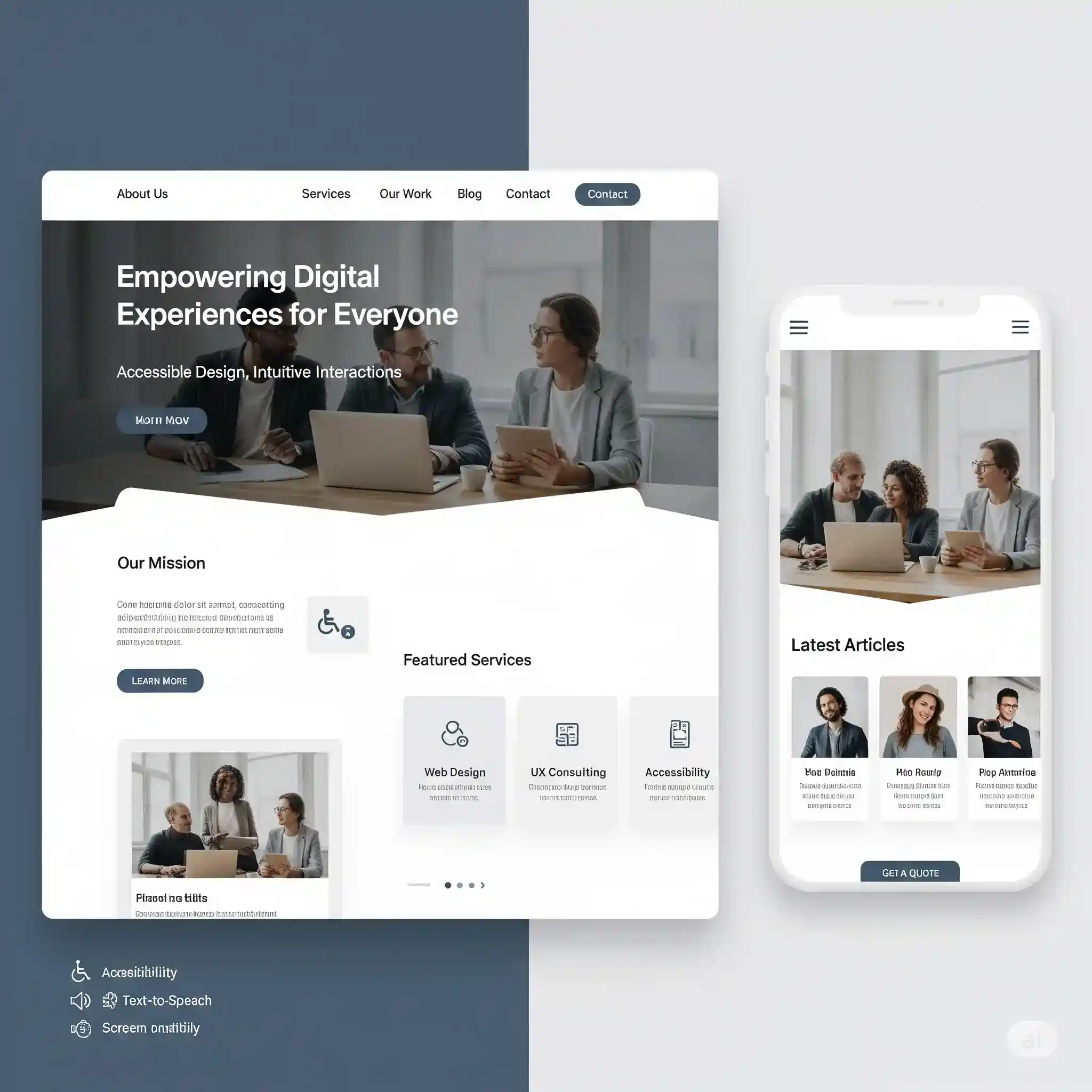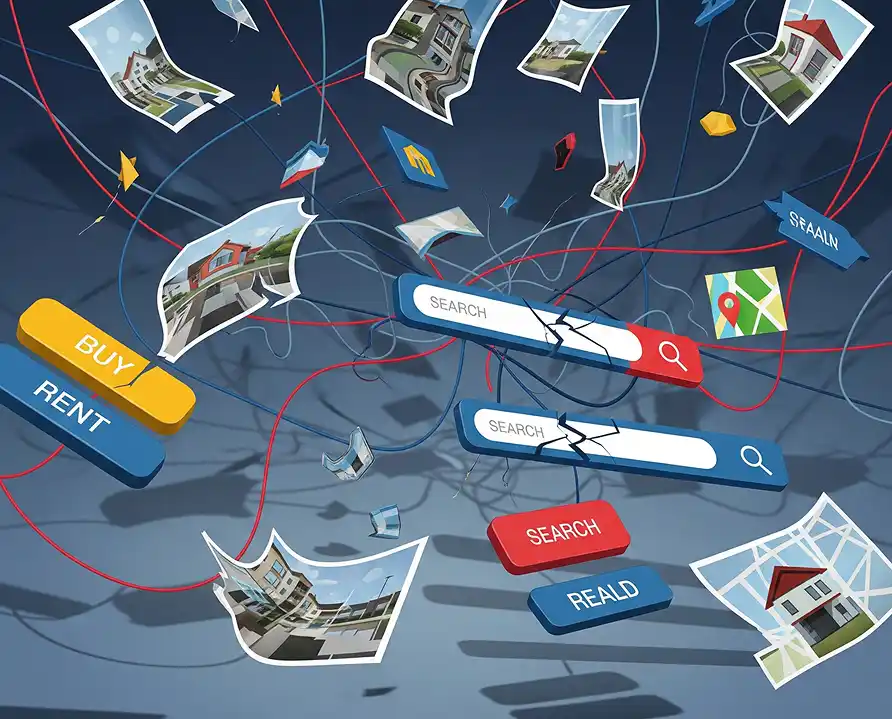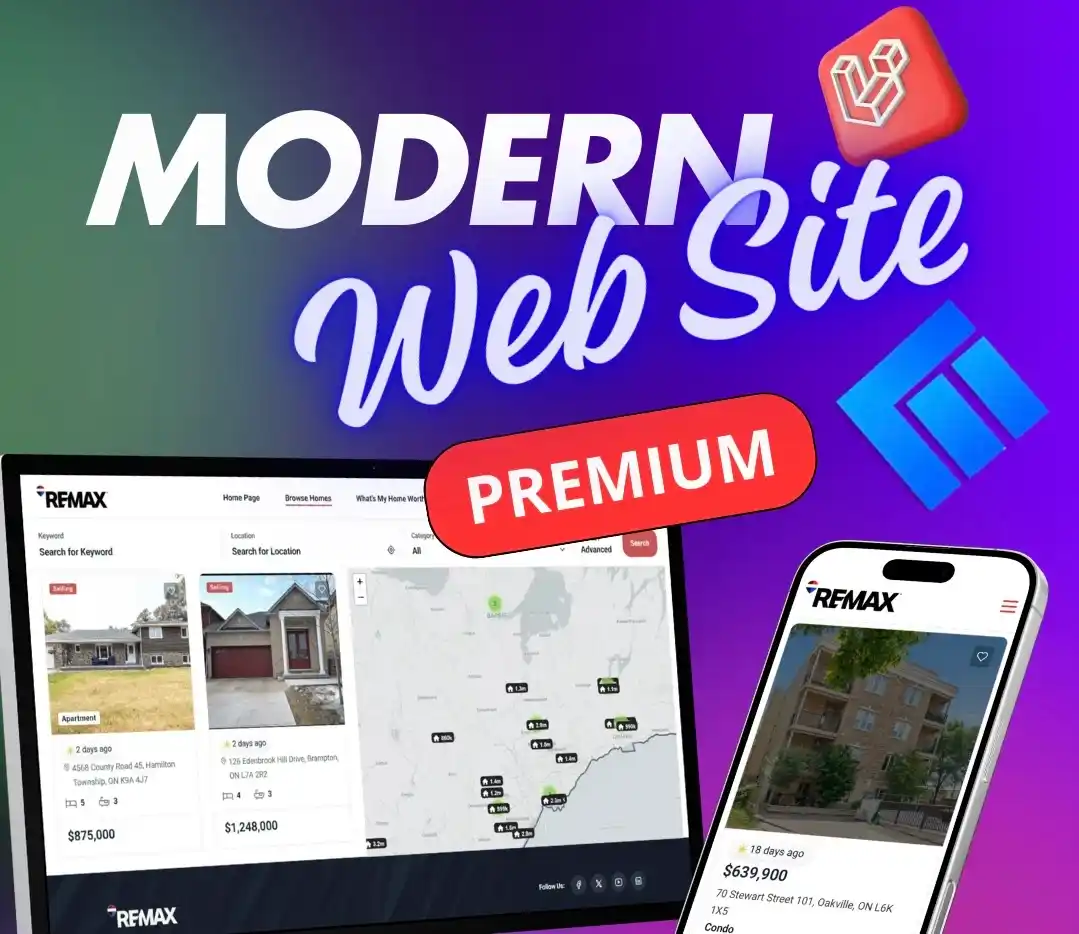

2025-08-08
Web Design Trends 2025: How to Create a Website That Wows
Web Design Trends 2025: How to Create a Modern Site
Tags:
Success in the digital world depends on an effective website that serves as a powerful tool for business. To make your site more than just a business card and a magnet for clients, it must follow current web design trends. Let's explore the key trends that will dominate in 2025 and how to apply them so your project stands out from the competition.
1. Minimalism and Clean UI
This trend remains relevant but is taking on new forms. In 2025, the focus is on "smart minimalism," where every element serves a purpose. Ample white space, clear typography, and a minimal number of decorative details help to focus the user's attention on what's most important—the content and the call to action (CTA). This also improves website loading speed, a crucial factor for SEO and an enhanced user experience.
2. Hyper-Personalization and Dynamic Content
Users expect a website to "understand" their needs. In 2025, hyper-personalization will grow in popularity, adapting content, images, and offers based on a user's Browse history, geolocation, and behavior. For instance, visitors from Kyiv might see different promotions than clients from Lviv. This not only improves the user experience but also significantly boosts conversion rates.
3. Interactive 3D Elements and Micro-Animations
Interactive 3D elements and micro-animations are becoming the standard. Instead of static images, designers will use animated 3D product models, allowing users to view them from all angles. Micro-animations on buttons, icons, and during scrolling add a sense of "liveliness" to the site and make interaction more enjoyable.
4. Dark Mode
The popularity of dark themes continues to grow. It not only looks stylish but also reduces eye strain, especially during nighttime use. Websites that offer users a choice between light and dark themes are perceived as more progressive and client-oriented. Integrating a dark mode isn't just a trend; it's a sign of attention to user needs.
5. Accessibility
In 2025, website accessibility is not just a recommendation but a mandatory requirement. Websites must be convenient for all users, including those with disabilities. This includes:
- Screen reader support.
- High contrast between text and background.
- Easy keyboard navigation.
- Alternative descriptions for all images (alt-text).
This is not only an ethical requirement but also a positive factor for SEO.
6. Artificial Intelligence in Design
Artificial intelligence (AI) helps automate routine tasks and create unique content. In 2025, AI will be used for:
- Generating personalized layouts.
- Creating unique illustrations and design elements.
- Optimizing the user journey (user flow).
Thanks to AI, the design process becomes faster and more efficient.
Conclusion
For your website to be successful in 2025, you must not only follow these trends but also integrate them into your business strategy. Combining visual appeal, usability, and innovative technology will allow you to create a project that impresses visitors and ensures high conversion rates.
Looking for a reliable partner for website development? Register on our platform-directory. It's a resource that unites IT and marketing companies with expertise in development and design. They will help bring your ideas to life.
- Web design from Confidence Technology
- Services from
https://diamond-it.net/
Don't delay, as investing in quality web design is investing in the future of your business.
Last News.
AI Manager Bob
Hi! Let's find the perfect solution for your business!

Select service type
Websites
Systems
Design
Mobile Apps
Promotion
Other
In which industry is your business?
E-commerce
Finance & Banking
Medicine & Health
Education
Real Estate
Entertainment & Media
Food & Restaurants
Other
What type of project do you need?
What is your project budget?
Do you want to choose technologies for the project?
Leave your contact details and our specialist will contact you to clarify details and offer the optimal solution.
What features should the project have?
CRM system
Online payment
Personal account
Product catalog
API integration
Analytics
Chat/Support
Mobile app
Blog/News
Booking system
Multilingual
Site search
Reviews/Ratings
Notifications
Data export
Data import
Subscriptions
What technologies interest you?
Laravel
Yii2
CodeIgniter
Symfony
CakePHP
PHP
Node.js
Django
Flask
Spring Boot
.NET Core
Express.js
NestJS
Golang
Solidity
Next.js
FastAPI
JavaScript
React
Vue.js
Angular
Svelte
jQuery
Nuxt.js
Backbone.js
Meteor.js
Solid.js
TypeScript
WooCommerce
PrestaShop
OpenCart
Shopify
Drupal
Magento
WordPress
Webflow
BigCommerce
React Native
Flutter
Kotlin
Swift
What additional services are needed?
Design
Branding
SEO promotion
PPC advertising
Technical support
Hosting
Copywriting
Analytics
Testing
Training
Content management
Security
Technical audit
SMM promotion
AR/VR development
Chat bots
Automation
Consulting
Almost done!
Leave your contact details and our specialist will contact you to clarify details and offer the optimal solution.
We guarantee the confidentiality of your data.
Leave your contact details
WhatsApp
Telegram
Viber
Email
Thank you for your request!
Our specialists will contact you within 24 hours to clarify details and offer the optimal solution.


_11zon_11zon.webp)



